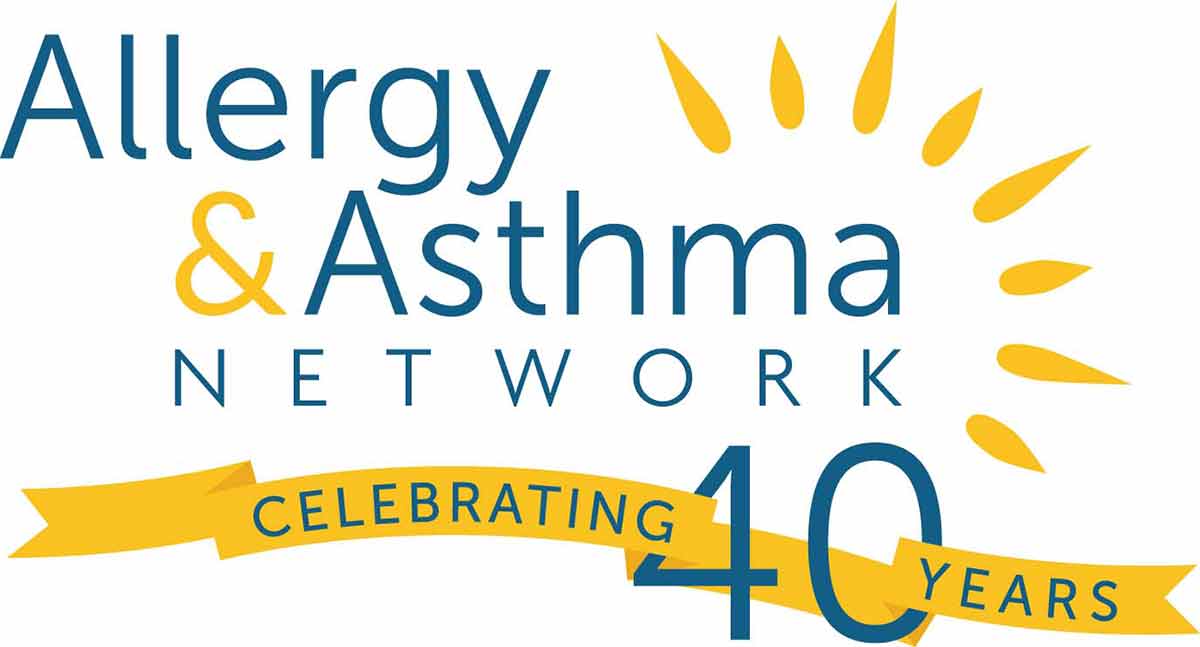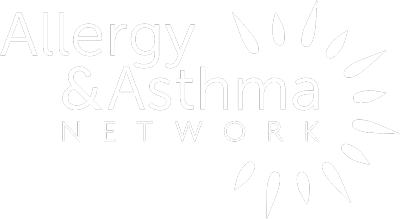Anaphylaxis: The Changing Treatment Landscape (Recording)
Published: April 3, 2025 Revised: June 15th, 2025
This webinar was recorded on June 12th 2025
Between 1.6% and 5.1% of people in the United States have experienced at least one episode of anaphylaxis, with the most common triggers being certain foods, medications, and insect stings. Anaphylaxis is a severe allergic reaction that requires timely treatment with epinephrine for survival. Recent studies indicate that nearly 1 in 50 Americans have experienced a life-threatening allergic reaction. In this webinar, Dr. Theresa Bingemann will discuss current guidelines, emerging therapies, and evidence-based approaches to improve patient outcomes, offering practical insights on the acute treatment and prevention of anaphylaxis in the evolving landscape of its management.
Speaker:
Theresa Bingemann, MD, FACAAI, FAAAAI – Allergy & Immunology
Dr. Bingemann holds a dual appointment in the University of Rochester Medical Center’s Department of Pediatric Allergy & Immunology as well as the Department of Allergy, Immunology & Rheumatology. She completed her medical degree at Rutgers Medical School in New Jersey, where she was elected to the Alpha Omega Alpha medical honor society. She subsequently completed a combined residency in Internal Medicine and Pediatrics at Mount Sinai Hospital in New York City, and her Allergy and Immunology fellowship at the Mayo Clinic in Rochester, Minnesota. She currently practices clinical allergy & immunology for pediatric and adult patients. Her clinical interests include food allergy, environmental allergies, asthma, atopic dermatitis, medication allergy, urticaria (hives) and angioedema. Dr. Bingemann is the Program Director for the Allergy and Immunology fellowship training program and enjoys clinical research on food allergy and physician wellness.
This Advances webinar is in partnership with the American College of Allergy, Asthma, & Immunology. ACAAI offers CMEs for physicians for this webinar. If you are a member of ACAAI, you can obtain CME through the member portal for Advances webinars.
All attendees will be offered a certificate of attendance. No other continuing education credit is provided.
Sponsored by the American College of Allergy, Asthma and Immunology

Transcript: While this transcript is believed to be accurate, errors sometimes occur. It remains your responsibility to evaluate the accuracy and completeness of the information in this transcript. This transcript is not intended to substitute for professional medical advice.
Bethany Burkhart: Okay, we’ll go ahead and get started. Hello, everyone! Thank you for joining us today. I’m Bethany Burkhart, the Director of Operations at Allergy and Asthma Network. I’m excited to welcome you to this afternoon’s webinar. We have a great session planned, and I’m pleased to introduce our presenter, Dr. Teresa Bingemann. With her extensive knowledge of allergy and immunology, we can look forward to an enlightening session. Before we begin today’s program, I’d like to cover a few housekeeping details.
First of all, attendees will remain muted during the webinar to minimize distractions. We will record the ession and upload it to the website later this week. You can access all of our recorded webinars at allergyasthmanetwork.org. Scroll to the bottom of the page to access past webinars and future events.
Our webinar schedule to us is scheduled to last one hour, and will include a dedicated Q&A segment Although we will answer questions at the end, please feel free to submit them at this time using the Q&A box at the bottom of the screen. A team member will monitor the chat for any questions or assistance you may need. We will do our best to address as many questions as possible before we conclude. This Advances webinar is brought to you in collaboration with the American College of Allergy and Asthma and Immunology. A-c-a-a-i offers the continuing medical education credits. Cme credits, physicians and attendees credits for others You can create your ACAAI account to earn CME or attendance credits, for Advances webinars. Via the member portal. All attendees will receive a certificate of attendance. Please note that no additional continuing education credits will be provided A few days after the webinar, you will receive an email containing supplemental information and a link To download your certificate. We will also share the link to the certificate in the chat. So let’s get started. Today’s presentation is titled, Anaphylaxis. The Changing Treatment Landscape. Between 1.6 and 5.1 of people in the United States have experienced at least one anaphylactic episode. With certain foods, medications, and insect stings being the most common triggers. Anaphylaxis is a severe allergic reaction requiring a timely epinephrine treatment for survival. Recent studies indicate that nearly 1 in 50 Americans has experienced life-threatening allergic reaction. In this webinar, Dr. Theresa Bingemann will discuss the current guidelines, emerging therapies, and evidence-based approaches to improving patient outcomes. We will offer practical insights on the acute treatment prevention of anaphylaxis in the evolving landscape. Of its ti- of its management. It’s a pleasure for me to introduce our speaker, Dr. Bingemann attended Rutgers University and earned her medical degree at the University of Medicine and Dentistry in New Jersey. Rutgers Medical School. She then completed a combined internal medicine pediatrics residency At Mount Sinai.
She then completed an allergy and immunology fellowship at Mayo Clinic. Dr. Bingemann is an associate professor of pediatrics and medicine at the University of Rochester. Where she is a program director of the Allergy and Immunology Fellowship. She is actively involved in teaching fellow residents and medical students. Dr. Bingemann is a fellow at Quad AI, and the American College of Allergy and Asthma and Immunology. And the American Academy of Pediatrics. She serves as an editorial board for the Annals of Allergy and Asthma and Immunology. And a reviewer for several other journals. Dr. Bingemann serves as the American Board of Allergy and Immunology Board of Directors in the ACGME Allergy and Immunology Review Committee. Wow. She’s an active member of several committees. In the ACAAI and Quad AI. Her research focuses on IgE and non-IgE medicated food allergies, anaphylaxion. Anaphylaxis and physician’s well-being. Okay, thank you for being here, Dr. Bingemann. I’m going to turn it over to you, and then we’ll have a quick question and answer at the end.
Dr. Theresa Bingemann: Thank you so much for having me. It’s a pleasure to be here. And thank you to all of you that are participating for being here to talk about This really important topic. Um, these are my disclosures.
So, I’m hoping during the next hour. We can differentiate anaphylaxis from other acute allergic reactions. And justify the use of epinephrine as first-line therapy based on clinical guidelines.We will also analyze patient and system-level barriers to timely epinephrine administration.And evaluate strategies to overcome them in clinical practice. Lastly, we will appraise emerging therapeutic modalities for anaphylaxis management. Including non-injectable delivery systems and integrate them into patient-specific treatment planning. So let’s start out with what is anaphylaxis? Anaphylaxis is a serious allergic reaction that is rapid in onset and may cause death. Typically, this has multi-organ involvement. And what you see on the right here is the array of signs and symptoms that may occur. So patients may report dizziness, faintness, you might see loss of consciousness. You might… someone might complain of an itchy mouth, a hoarse voice, lip swelling, congestion, sneezing. There might be difficulty breathing, there can be GI symptoms, like cramps, nausea, and vomiting.
The most common symptoms are the skin findings, which occur about 90% of the time. Which is rash or hives. And then, of course, we can have swelling of different areas as well. Anaphylaxis has been estimated to occur in up to 5% of the overall population. And one of the most challenging and possibly frustrating things for patients and physicians alike are that at least a third of the cases occur Without an identifiable cause. So, there are a variety of triggers of anaphylaxis. Including foods, and the most common foods, of course. Our peanuts, tree nuts, fish, shellfish, milk, egg, soy. Um, we… And, uh, Sesame? And… but it’s important to remember that any food can be an allergen. The stinging insects. Are… can be an allergen, as well as antibiotics, and things we give in the hospital. Latex allergy is less commonly seen, but we can see occupational allergens. And, um, we can see problems after radio contrast media. Anaphylaxis has been on the rise, and overall, the rate of anaphylaxis per 100,000 has increased by 101%, From 14.2 in 2005 to 28.6, In 2014.
The greatest increase has occurred in children aged 5 to 17. In addition to an increase in food-related anaphylaxis. Medication-related anaphylax has also increased substantially. So then, now, let’s look at the rates of anaphylaxis according to age. And we’re looking at, on the y-axis, per 100 person, 100,000 person years. And on the x-axis, we are looking at ages. From babies on the left to the elderly on the right. And you see the largest group in the young kids under 4? Are related to food? Then, drugs, and then idiopathic causes. As you get older, you see more and more related to drugs, and you see this array of idiopathic causes all along. Anasakis is a fish parasite. That people can have reactions to as well. This is most commonly described in Europe. But this can occur anywhere. So then, where is anaphylaxis occurring? And as a parent or a caregiver, it can be very stressful to send your child out of the home. When… whether that’s to school or to camp. And it’s important to recognize that the majority of anaphylactic reactions Actually occur in the home. And this is true for both children and adults. And in those studies where age wasn’t specified. Followed by, for kids. In another person’s home, and then school or… school, and then, um. Or a restaurant. And you see there’s more reactions for adults in restaurants than kids.
I always like to remind everyone that epinephrine is first line for the treatment of anaphylaxis. And as I try to demonstrate on the previous slide, this can happen anywhere. So it’s always important to have epinephrine with you. And there’s good data to show that early use of epinephrine can improve outcomes.
In fact, using epinephrine early is associated with a decreased need For additional doses of epinephrine, it reduces biphasic anaphylaxis. Biphasic anaphylapsis is when you have an episode of anaphylaxis, your symptoms completely resolve. And typically, between a few hours to 24 hours, the symptoms start up again. Early epinephrine can also reduce hospitalization. As well as fatalities. So what are the factors that increase the risk for severe near fatal or fatal anaphylaxis? Well, they’re listed here, which includes the delay in the use of epinephrine. The severity of the reaction, the absence of urticaria, and the reason this is an issue is because oftentimes. In the absence of urticaria, people don’t recognize these as allergic reactions.
Biphasic reactions, beta blockers and ACE inhibitors being over 65, Having cardiovascular or pulmonary disease. When medication is a trigger, uncontrolled asthma. Elevated tryptase, or mast cell disorder, or platelet activating factor acetyl hydrolase efficiency. You’ll note the only thing on here that’s truly modifiable Is timing of epinephrine use. It has also been shown that early use of epinephrine reduces the length of stay In the emergency department, and reduces biphasic reactions. Even if that epinephrine has not been given by the individual or the caregiver. Even when epinephrine is given by EMS. Unfortunately, there have been anaphylaxis fatalities, as you know. And the case fatality rate is between 0.25 and 0.33%, of hospitalizations, ED presentations for anaphylaxis. So it’s about .47 to .69 per million persons. And what are the risk factors for all causes except venom?
Those include black race and older age. For venom anaphylaxis, white race, older age, and male sex. Are risk factors for fatality. The highest risk of fatalities occurs in individuals greater or equal to 60 years old. I find in my clinic, I often describe when to use epinephrine a few different ways.
Because through the years, whenever I’ve been on call. I’ll get that call saying. Is this the right time to use my epinephrine? Can you talk me through this? And so, we give families a lot of information, and it’s hard to remember it all. So, I often say. That if you’re having more than one body system, and it’s an acute allergic reaction that meets the definition for anaphylaxis. If you have hives and coughing, that would meet the definition for anaphylaxis. Hives and vomiting. I also tell people, if someone has that deer in the headlights look, or that sensation of impending doom. That’s a pretty good time to use epinephrine as well. And it’s important that if a reaction is progressing quickly.
Always use the epinephrine. The other factor is our devices can be tricky. They involve multiple steps.
And oftentimes, what we prescribe, and maybe even teach someone on, is substituted at the pharmacy, and so that’s not the device they get. And so, oftentimes, people say they don’t know how to use the medication. Which is why they don’t use it. Another common reason for not using epinephrine is that oftentimes people didn’t think it was necessary. Other reasons for not using epinephrine, including needle phobia, so not wanting to stick myself or my child. Not wanting to go to the ED if I used epinephrine.
Fear of hurting their child. Or device storage concerns. So you know there’s recommended storage temperatures on these devices, and so oftentimes, people worry about bringing them out and about with them. And so, it is important to always have these on the allergic individual. And to use them when needed. So what are parents and caregivers experiencing when their child is having a reaction? Well, one of the things is fear of hurting their child. In particular, if the child is very scared about using epinephrine. And the child is violently jerking their legs or thrashing about. Oftentimes, if there’s uncertainty about the diagnosis. I’ve often been asked… been asked, am I going to hurt my child if I give them epinephrine and it wasn’t needed? Epinephrine is extraordinarily safe, and so when in doubt, it’s safer to give the epinephrine than not.
It is extort nearly safe. Needless to say if a child is having a reaction, they will be experiencing that. There has been questions about these devices. If it is safe to use. It is always best to have an up-to-date. Unless it is discolored and has a lot of particulate matter. This is particularly in young kids who are scared. You want to stabilize it as much as possible. Place the device on the leg. Importantly, if it comes out, do not reinsert the needle. Studies have also been done looking at factors associated with correct autoinjector. The one significant factor has been time elapsed since the last visit. We should be making sure. We are reviewing how to use it. I typically advise people to go to the manufacturer’s website. Where there is often video instructions. It is important this could be helpful of people have reactions. This moves circulation throughout the body. It also relaxes the airwaves. It may cause the peoples to dilate. Parents can be very frightened. Love ones can become very frightened. When they see this flushed individual. It is a little easier if we know what to expect. Some people will say that they feel anxious and a little hyper. To be expected. This is a sign that it is working. Up to this point I have been talking about autoinjector’s.
For years patients have wanted some other alternatives. For the rest of the talk I am going to discuss some items that are currently improved. — approved. So you can understand what is coming down the pipeline. There are now two epinephrine naval — nasal sprays. This is still undergoing evaluation. There is also a sublingual film that is being studied at the moment as well. I want to take you through those studies that led to the approval of our first enter nasal epinephrine. Most of the studies for all of the devices have been done in very similar ways. For our first currently approved device, there were four studies in 175 healthy adults without anaphylaxis. The reason for that is it is considered unethical to do studies and people who have anaphylaxis. When we know epinephrine works. Also, because we can do these studies and people that are having anaphylaxis, they measure the epinephrine levels in the blood. They compare the levels with these new devices to the levels of the currently approved devices. I will go back to pharmacology for a second. You may remember these. One is a study of how a drug moves through the body. It tracks absorption, distribution, metabolism, excretion. It looks at how the drug affects the body. This is our first figure. Looking at this in turn nasal device. Compared to self administration. What do you see the plasma concentration. On the X axis you see time in minutes. Starting with the green, you see the plasma concentration over time. Administered by a professional. With the yellow being an injection. Versus EpiPen in blue. You can see the device that is in autoinjector. That leads to a peak concentration a little bit earlier.
They looked at the plasma concentration versus time when you are looking at administering two doses. You know that at times a second dose of epinephrine is needed. This is why we recommend having two packs with an individual at all times. What you see in the dark green is the Neffy administered twice, once in the left nostril and once in the right nostril. In the yellow, they are looking at epinephrine administered by a syringe. And then they look at EpiPen in blue. In these circumstances, the enter nasal epinephrine has a faster time to peak plasma concentration. That being said, the most important part is what does it do to the body? What we are seeing here is when we administer epinephrine in any of these forms, how long does it take for us on the top to see a change in the systolic blood pressure in the middle, a change in the baseline diastolic blood pressure. And on the bottom, a change in baseline and heart rate. As you know, when you administer epinephrine, we expected to work quickly. That is what we see here with the changes in vitals for the systolic blood pressure and the heart rate, we often tell patients that if we administer epinephrine, we expect that symptoms should improve and if they have not within 15 minutes, they can administer another dose. It is important that the medicines are working in that timeframe. If you look at the middle of the slide, injections have been associated with a drop in diastolic pressure, which is not seen with the nasal devices.
What else do they have to do to get enter nasal epinephrine approved most patients with anaphylactic allergies may also have environmental allergies or they might get a viral upper respiratory tract infection. So if we are going to treat someone with nasal epinephrine, it is important to know that if they are congested, this will work. An upper respiratory tract infection had minimal impact on the absorption of epinephrine. There were also allergen challenges where those with seasonal allergies were exposed to their allergen. They developed congestion but that did not have a significant impact on absorption. This is important because as I mentioned earlier, congestion might be seen as part of an allergic reaction. The group that has a warning label for intranasal epinephrine is for those who have had previous nasal surgery or those who may have had nasal polyps. This is based on lack of studies and also the possibility that this might impact absorption. This may eliminate harm from errors. Hopefully people will be more likely to use this. Each device has one dose and it. This is the same that is used for Narcan. You are not angling to the inside or outside. Can use the second device. That is why we do not do a test spray. We move onto the next dose if it is needed. We have two doses currently available. What is approved for adults and children. Another is approved for children for years and older. What side effects might someone see after using intranasal epinephrine? The side effects have included headaches, throat irritation, nostril irritation, and a funny feeling in the nose. People also report signs and symptoms that I mentioned earlier related to epinephrine. This is the device. It is a non-FDA approved nasal epinephrine that is still in development. Just like the previous device I showed you, they are looking at the maximum concentration after one dose is administered. In this case they did doses in each nostril. And they did EpiPen as a comparison. The blue shows the enter nasal in opposite nostrils. The blue and white lines show the enter nasal device in the same nostril. And the purple shows the EpiPen in opposite thighs. A picture of the devices over here on the right. They then looked at a few different concentrations. That is in the blue. All of them met or exceeded the concentration in the blood as in autoinjector.
What about sublingual? It is being designed to go right under the tongue like you see here. It is designed so it is easy to carry around. Whether it is on a wallet or in your pocket or in your purse. I have even seen little devices so we can go on the back of phones. The idea is that will be rapid sublingual absorption. You do not have to worry about knowing how to use the advice. The hope is the fact that you can put this in the mouth, it will reduce the hesitancy to use autoinjector’s. Just like the others studies, what I am showing here is the manual injection of epinephrine. It is in the black. The EpiPen is in the blue. The generic EpiPen is in the tank. This is showing you the geometric mean the concentration of the epinephrine over time. You see that they all lead to significant increases in epinephrine concentration over time. Then we looked at the time. All of these devices, as I mentioned, were studied at the same way. They looked at what was the concentration in the body and how fast it occurred. In this group, they were looking at the sublingual time to maximum concentration. This led to the fastest time to maximum concentration. Then they also did another study showing that the median time to maximum concentration was fastest in this one with EpiPen. These are concentrations. We look at them as a comparator. What is most important is what happens to someone’s vital signs? When you are looking here you see at the top left the median change in systolic blood pressure on. The top seed pulse rate on the bottom left. And on the right you are seeing heart rate. What you can see in the green is the sublingual epinephrine had a prompt increase in systolic blood pressure. As well as diastolic blood pressure. These other devices also had increases. They were not as high. But it is important to know that they’ll work. Since we are putting this in the mouth, are there things in the mouth that can make this not work as well? What they did was stay tried to see what would happen if someone had to it better residue in their mouth and then they used the sublingual film. It turns out it did not have a significant impact. What if he goes in the mouth and it moves around will that be a problem? It turns out that that also did not impact it.
The good news is there were no significant adverse events. No talk on anaphylaxis would be complete without talking about the 2020 three practice parameter update. This raises the idea if epinephrine is used promptly, immediate activation of EMS may not be required if the patient experiences a prompt, complete, and durable response. It is very important that this is individualized. And each patient discusses this with their physician. The guidelines make a few suggestions. They say home observation following the first those may be possible if the symptoms resolved within minutes of administration, they do not recur, or the patient is asymptomatic. It is important that they have another device and they can be monitored and that they could get to emergency care is needed. In the yellow it says consider EMS activation and possibly a second dose of epinephrine but may continue to observe at home and if comfortable. They are saying you gave the epinephrine and the symptoms are resolving within minutes of administration. But you might have a mild persistence of nausea, coughing, stomachache. The symptoms are improving. Definitely not worsening. They should not last for more than 20 minutes. A lot of this is personalized. You need to think of what the patient is comfortable with. In red you want to activate EMS immediately and consider a second dose of epinephrine. Do not observe at home if someone is experiencing this in the symptoms are not resolving. It is very important that if we do not have improvement, we seek emergency medical care. We are having this discussion about should be stay-at-home or not? What kind of things why we want to consider? First is patient comfort. If they are not comfortable, they should seek emergency care. Another thing is do they have epinephrine available? Do they have another dose available? If someone does not have epinephrine available, they should probably seek emergency care. You also need to be sure that the individual has a clear understanding of symptoms. If they do not understand what symptoms require the use of epinephrine, that person should probably seek emergency care. In addition to possibly staying at home, you have to understand how to use the device and be willing to use the device. They must understand the benefits of early treatment. If someone says I will treat myself, they need to activate emergency care immediately.
We need to know that the individual considering staying at home has adhered previous treatment recommendations. Someone who has a history of severe or near fatal anaphylaxis should always seek emergency care. There is a question I get all the time. Which device is best? In my opinion the device that is best is the one they are willing to use. They know how to use. I talked to you about several different devices today and I can tell you that I have three sons. One of my sons hates having anything in his nose. So when we talked about the influenza vaccine, he said I will take a shot over anything in my nose. My other two sons would take something in their nose over a shot any day. I share this with you because no one will want the same thing. We want people to be able to have their medicines carried with them, understand how to use them, and use them in the case of an anaphylactic emergency. I mentioned this earlier but I think it is extraordinarily important. No matter what device someone has, it does not work if they do not have it with them and they do not use it. Make sure patients understand their emergency plan and review it at least every six months. If they are not coming into the office, they can set reminders on their phone to review and practice. In summary, epinephrine remains the first line of treatment for anaphylaxis. Nasal epinephrine is now approved and has demonstrated its safety and effectiveness. New formulations are currently being developed. It is important to have a shared decision making conversation between patient and physician regarding home monitoring. This may not be appropriate for everyone. It is nice that this might help with that. If treatment is not durable and occurring as expected, please make sure they activate. Thank you so much for listening. I hope you found this helpful. I am happy to answer any questions. Thank you so much for that wonderful talk today. I have a few questions from the chat and from our Q&A box. Please feel free to put some more questions and there. The first question today would be would sublingual medication be suitable for children?
Bethany: The next question we have is what would you consider hypotension amongst adolescents?
Dr. Bingemann: That is a great question. I think the challenge is knowing what their baseline is. Most people will say 20 to 30 millimeters of mercury below their baseline. Other surrogate markers are are they dizzy or woozy or will they fall over?
Bethany: Thank you. Another question. How frequent are those reactions?
Dr. Bingemann: They occur in the single digits. The hardest part about this is each study you look at is a little different than the other. They said they were more common. It is thought that those reactions are in the single digits.
Bethany: Thank you. His repeat neffi given in the same nostril as the first dose or the other?
Dr. Bingemann: Great question. It is given in the same nostril. This can actually write down the cellular barriers. By using it, it opens things up more. It is well absorbed.
Bethany: Thank you. We will do one more. Are those reactions delayed to absorption of allergenic food?
Dr. Bingemann: There’s a lot we do not know. I don’t believe it is related to absorption. There’s a lot we do not know when that area.
Bethany: OK. Thank you. That covers today’s presentation. That was fantastic. Thank you so much. It was informative. Thank you for answering so many of our questions. In a few days Zoom will email you a link to the recording. I would like to introduce a couple more webinars we have. Another one will be on July 17 at 4:00 p.m. Eastern time. On asthma and pregnancy. We will discuss critical insights into physiological changes of pregnancy that impact asthma control. Then we have a back to school with food allergies webinar on July 22 at 4:00 p.m. Eastern time. This will include sessions on 504 plans. We are really looking forward to July. Today was a great session. Thank you once again. We strive daily to be your trusted resource for people with allergies.
Dr. Bingemann: Thank you for having me.
Bethany: Have a great rest of your afternoon.








